When someone decides they want to attract birds to their yard, often the first thing they do is put up a birdfeeder (or two). It’s what we did when I was a kid, and it’s what countless other people I know have done.
There’s nothing wrong with putting out a birdfeeder. They’re a great way to bring the birds to locations where it’s easy for us to watch them. But, if you want to attract more birds (and better care for the ones you are already attracting), then you need to take more of an ecosystem approach.
All animals need food, shelter, and water to survive. The birdfeeders only provide food, and often only a limited variety of food, but not all birds eat the same thing. By providing a variety of food sources, places for the birds to find shelter, and access to water, you are taking an ecosystem approach.
Taking an ecosystem approach isn’t hard to do and will attract more birds (and a greater variety of species) to your yard. So, let’s take a look at how to provide each component of our ecosystem approach for attracting backyard birds.
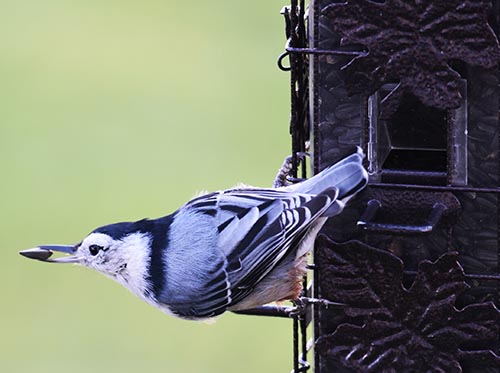
1) Provide a wide variety of food sources
The easiest way to provide a wide variety of food sources for your birds is to plant lots of native plants. These include native grasses, native wildflowers, native vines, and native trees and shrubs. Plant as many as you can and as many different types as you can. Make sure to include some species that produce seeds, some that produce nuts, and some that produce fruits or berries.
Even if you only have a small yard, you can still create a thriving native plant based ecosystem. I know multiple people who have well under an acre and still have 40-50 different species of native plants. You can do that and still have a beautiful property that fits all the appropriate community standards. All you have to do is arrange the plants in an aesthetically pleasing way.
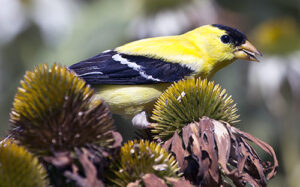
Obviously, planting a wide variety of seed, fruit, and nut-producing native plants directly provides lots of different types of natural food for the birds to eat. What is often overlooked is that all those native plants will also attract lots of insects. But don’t worry, I’m not talking about attracting insects in an “Eww…this place is so buggy!” sort of way.
Unless you’re really looking for them and geeking out about all the little critters you can find, you probably won’t notice many of the insects that are attracted to your native plants. Others will be moth caterpillars, like the inchworms you may have played with as a kid, which you may or may not notice. But those inchworms and other types of insects, are vital to the health and growth of baby birds.
There are also insectivorous birds, like phoebes, great-crested flycatchers, and kingbirds, which feed primarily on insects for their entire lives. Insects, not nectar, are even the primary food the hummingbirds that so many of us love. So, don’t worry about the insects that your native plants are going to attract – they’ll just attract more birds which will be happy to keep the “bugs” under control.
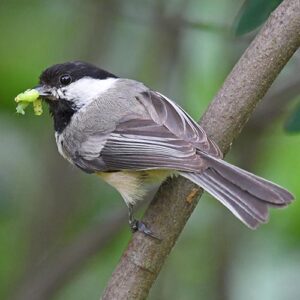
Now, none of this means that you have to give up your birdfeeders. You can still keep them, but they become a supplement to everything else you are providing your birds, not the primary thing you are offering your birds. In fact, in my opinion, the best use of birdfeeders is to bring the birds to the places where we can most easily enjoy and observe them. The birdfeeders are more for us than for the birds.
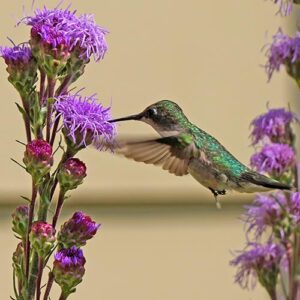
2) Provide shelter
When I say, “provide shelter for birds,” many people immediately think of birdhouses or nestboxes. And while both of those do provide shelter, they aren’t the only ways you can provide shelter for birds.
Knothole and other cavities in living trees or snags will serve the same purpose as a birdhouse or nestbox. But the living tree or dead snag, can also provide food for the birds. In addition, the branches of the living tree (or a smaller shrub) can provide places to hide from predators, as well as places for birds like robins and hummingbirds to nest because they don’t nest in cavities and won’t touch a traditional birdhouse.
Brush piles are another great way to provide shelter for birds and a host of other wildlife. Even native bunch grasses (the kinds that grow in clumps, not mats) can provide shelter for some species of birds. Having lots of layers, or plants growing at different heights, will also help your birds have a variety of places to escape to if they need it.
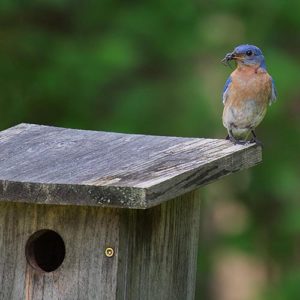
One of the best things about providing natural forms of shelter for your birds is the fact that many of the native plants you are growing to provide your birds with food will also provide shelter, and vice versa. We’ve all got limited space and budgets, so I count anything that can do double duty as an extra win.
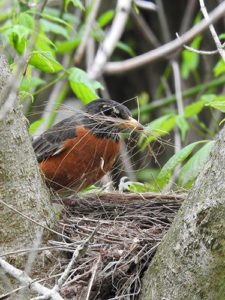
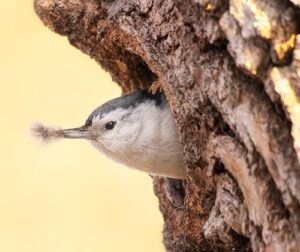
3) Provide access to water
Access to water is often overlooked when it comes to attracting birds, but it can be a huge draw. Not only do birds need water to drink, but they also need it to bathe in and to clean their feathers. Songbirds don’t need deep water – an inch or two is plenty.
Providing access to water can be as simple as setting out a small tray of water or including a birdbath in your garden. Or it can be a larger project which includes a small pond or other water feature. The options are nearly as limitless as your imagination.
If you put out a tray of water or a birdbath, be sure to clean it on a regular basis. This will not only keep it from spreading diseases among your birds, but it will keep it from becoming a mosquito factory.
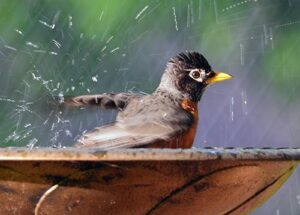
The sound of running water is especially attractive to birds. Obviously, waterfalls, fountains, or other ways to make the water gurgle and tinkle are great options in larger ponds or water features.
However, you can also hang a gallon jug filled with water over your birdbath or tray, then poke a few holes in the bottom of the jug so that the water slowly drips into the birdbath below. The sound of the dripping water is often enough to help draw the birds and is much less expensive than a waterfall or fountain. It’s also very easy to experiment with the number and size of the holes to get the sound right.
Ideally, you’ll be able to provide access to water throughout the year, even in the winter. This can be accomplished with heated birdbaths, stock tank heaters, or other heaters designed to be used underwater. There are even solar options for birdbaths that don’t have access to electricity but get enough sun to keep the solar panel charged.
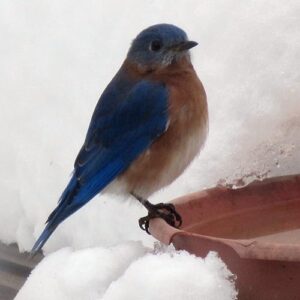
Summary
You’ll be able to attract more birds and a greater diversity of birds by taking an ecosystem approach and providing food, shelter, and water, instead of relying solely on a birdfeeder. Plus, you’ll also attract and provide for other wildlife and pollinators – something bird feeders alone will never accomplish.
If you would like personalized help creating your own pollinator and wildlife habitat, then we encourage you to check out the Backyard Ecology™ Community.
There’s lots of great “big picture” information available about creating pollinator gardens or larger habitats for pollinators and wildlife. What’s lacking are opportunities to say, “This is what I want to do. This is what I’m struggling with. How do I make it work on my property?”
That’s part of what the Backyard Ecology™ Community offers its members every day.
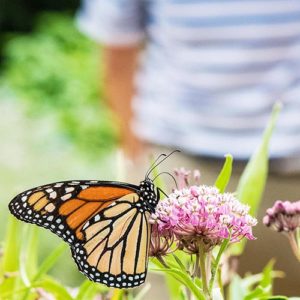
Thank you!
These amazing individuals go above and beyond every month to provide financial support which helps us create so much free content for everyone to enjoy and learn from.
Julie Krygier, Lizabeth, Russel Furnari, Crystal Robinson, Karen Veleta, Kevin B, Sally Mirick, Crystal Dyamonds, Mitchell Bell, Laura Hunt, Sue Ann Barnes, Adrienne Richardson, J. Adam Perkey, Ariel, Cara Flinn, David Todd, LaVonne Fitts, Cathy, Michael, Tom Winner, Eric Fleming, Julie, SB H, Christopher Scully, Craig, Rachel Antonucci, Melissa Egbertson, Switzy, CotswoldsCottageMA, Vilma Fabre, Pia O Nomata, Tyler, Linda McNees, HerculesBiggerCousin, Patrick Dwyer, Lilith Jones, and John Master.
Backyard Ecology™: Creating thriving backyard ecosystems that you can enjoy and be proud of
We created Backyard Ecology™ to help you confidently create pollinator and wildlife habitat that you can enjoy and be proud of. Because nature isn’t just “out there.” It’s all around us, including right outside our doors.
Our focus on the eastern U.S. means that the information we share is applicable to you and where you live. Join us as we ignite our curiosity and natural wonder, explore our yards and communities, and improve our local pollinator and wildlife habitat.
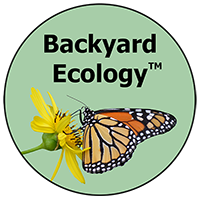
Backyard Ecology™’s Guiding Principles:




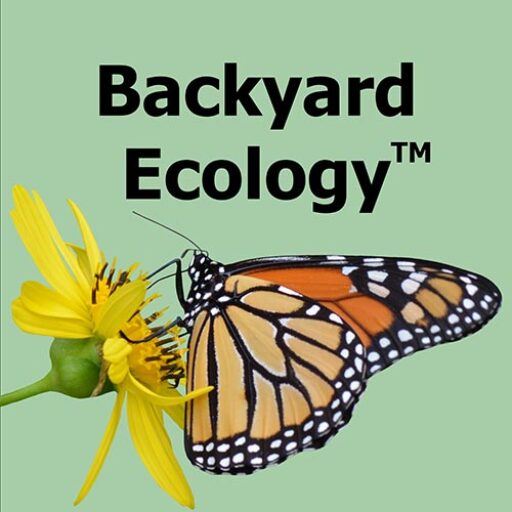
Leave a Reply